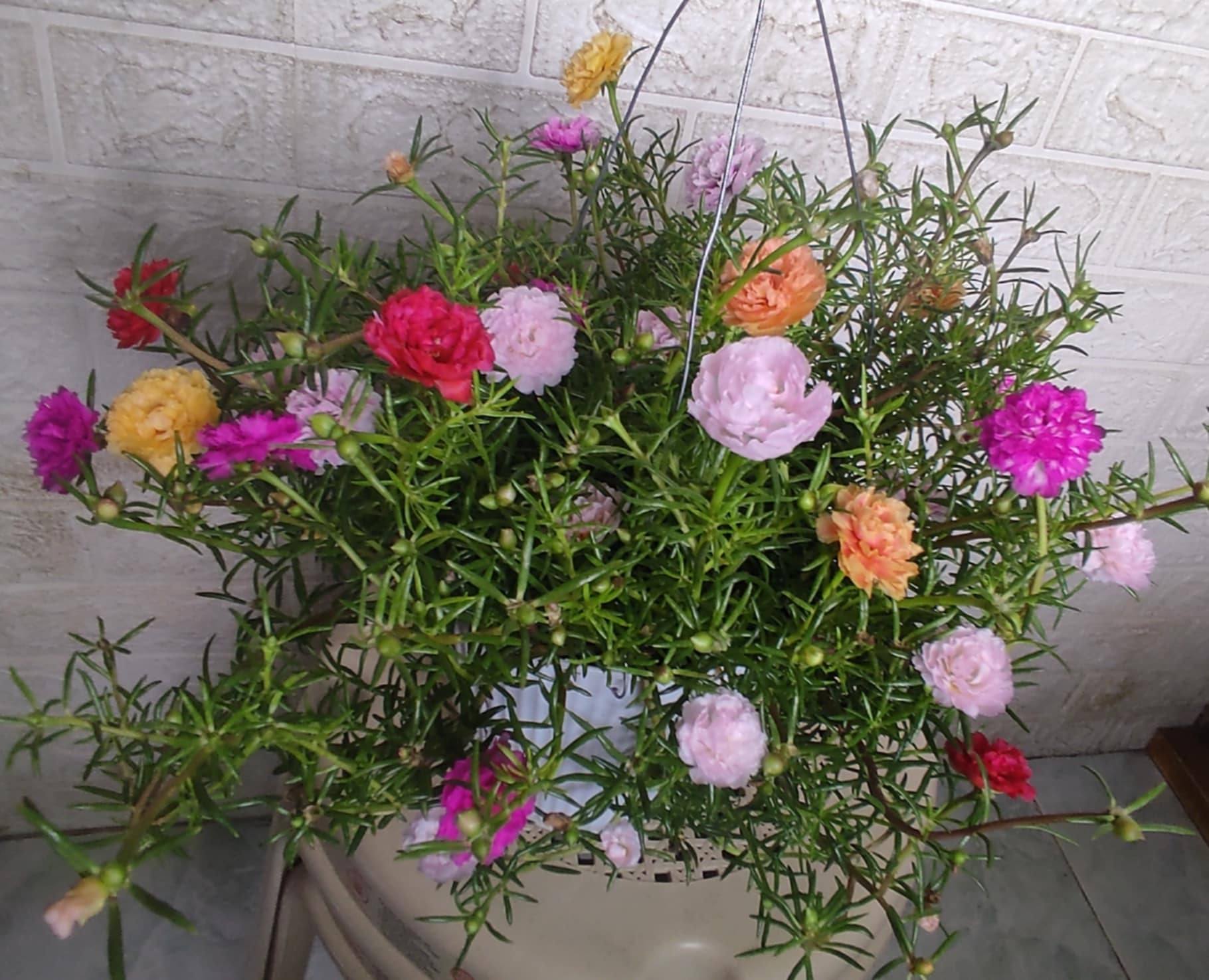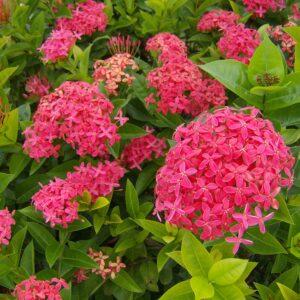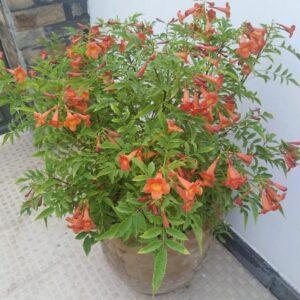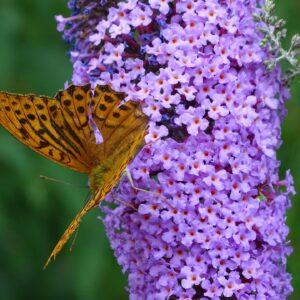Gul-e-Abbasi“The Magical Four O’Clock Flower – Gul-e-Abbasi (Mirabilis jalapa)
Mirabilis jalapa, sometimes referred to as Gul-e-Abbasi, is a delicate perennial flowering plant that blooms in the late afternoon with vivid, trumpet-shaped flowers, earning it the name Four O’Clock Flower. This plant, which originated in Peru but is cultivated all over the world, is well-known for its diverse range of bloom colors, aroma, and ease of growth, even in harsh conditions or warm regions.
Its hardiness is valued in South Asia, where it is lovingly cultivated in home gardens, temple grounds, and city borders.
Overview
Botanical name: Mirabilis jalapa
Common names: Marvel of Peru, Gul Bashambool, Four O’Clock Flower, Gul-e-Abbasi
Perennial plant type (grown as an annual in colder climates)
Between 2 and 4 feet in height (60 and 120 cm)
Spread: 2 to 3 feet (60 to 90 cm)
Leaves: Lush green, ovate leaves with a smooth texture
Flowers: fragrant and funnel-shaped; colors include pink, yellow, white, red, and combination.
Time of blooming: late afternoon to evening; summer to early fall
Lifespan: Blooms profusely for many months
Needs for Temperature and Light
Sunshine:
For the best blooming, it likes full sun.
While it can handle some shade, flowering might be less prolific.
Temperature:
thrives in warm weather (20–35°C / 68–95°F)
Frost intolerant; in chilly climates, it dies back unless its roots are stored or protected.
It behaves as a self-seeding perennial in tropical climates like India.
💧 Watering Needs
young plants:
Water 2–3 times a week to help the roots get established.
Plants that have established themselves:
Water once or twice a week during dry spells
Water less during the rainy season
A well-drained soil is essential. Root rot or mold can result from overwatering.
Do not let standing water accumulate around the base of the plant.
Fertilizer and soil
The type of soil:
Loamy, sandy, or clay soils are all suitable for this plant.
Prefers soil that is moderately fertile and drains well.
The pH ranges from somewhat acidic to neutral (6.0–7.5).
Fertilizer:
Needs little food
During the flowering season, use a balanced fertilizer once a month (such as 10-10-10).
At the time of planting, add compost or organic material to the soil.
⚠️ Excessive fertilization might result in thick foliage and a reduction in flower production.
🌿 Propagation
Seeds are the most common.
Begin indoors 4–6 weeks prior to the final frost, or sow seeds directly into the garden after the last frost.
Seeds germinate in 5–10 days.
In around two months, plants flower.
Tuberous Roots:
The plant develops subterranean tubers in subtropical or tropical climates.
In warmer regions, these can be left in the ground all year, while in colder climates, they can be excavated and kept in winter.
In the spring, tubers may be divided and replanted.
🌼 readily self-seeds; volunteer plants frequently emerge annually without the need for replanting.
Maintenance and Pruning
Removing worn blooms (deadheading) is not required, but it does help keep things looking tidy.
Cut back excessive growth or limbs broken by wind or insects.
After the first frost, chop down the entire plant in colder regions and excavate tubers to keep indoors during the winter.
In windy areas, consider staking taller plants.
Issues and pests
Usually free of pests, but sometimes vulnerable to:
Aphids
Whiteflies
Leaf miners
mildew or rust in congested, humid environments
🛡️ Use a light soap spray or neem oil to manage pests. Make sure there is adequate ventilation and don’t let water get on the leaves while you’re watering.
🎍 Applications for gardens
Ideal for fences, paths, and borders
Enhances the aroma and hue of evening gardens.
Draws bees, butterflies, and moths.
may be cultivated in balcony planters or big pots
Goes well with cosmos, zinnias, marigolds, and celosia.
Note About Toxicity
In particular, the seeds and tubers of the plant can be harmful if consumed in high quantities.
Stay away from little kids and animals.
Conclusion
Four O’Clock, Mirabilis jalapa, or Gul-e-Abbasi Flower is a stunning, hardy, and low-maintenance plant that enhances your garden with its vibrant blooms, pleasant aroma, and old-world appeal. This plant is perfect for novices and busy gardeners alike since it repays attention with months of vibrant joy.”





Reviews
There are no reviews yet.